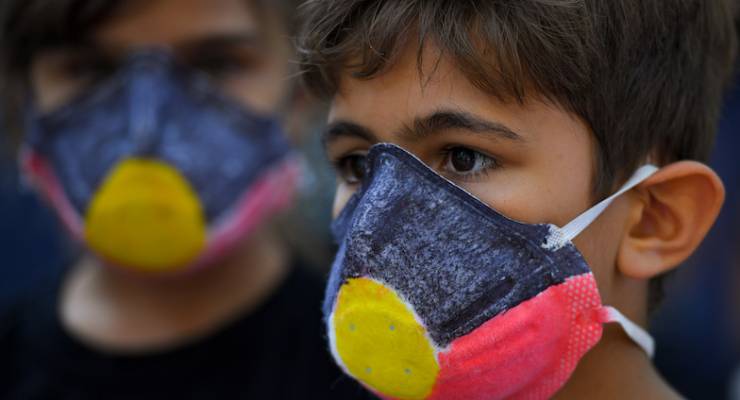
The coronavirus could decimate Australia’s Aboriginal and Torres Strait Islander communities, with public health experts warning there hasn’t been a health risk this severe since the early days of colonisation.
Crikey examines why indigenous Australians are especially at risk.
COVID-19 may already be spreading
Until last week, international travellers still wandered across popular tourist spots, with free national park entry advertised in a bid to attract more tourists to the Northern Territory.
Non-essential travel permits for remote communities have been revoked with the NT government announcing its bordered will shut this week, with any arrivals to be quarantined for 14 days.
Slow-moving decisions could have a disastrous effect, Juanita Sherwood, associate dean of Indigenous strategy and services at Sydney University’s faculty of medicine and health, told Crikey. “The impact of this will be devastating to our community,” she said.
Sherwood pointed to North American reports which liken the effect of smallpox on the native population to what’s expected from coronavirus. “This is going to be the same thing.”
Prime Minister Scott Morrison has already warned Australians about the dangers of travelling to remote areas of the country. Aboriginal health organisations have also called for the federal government to allow police patrols to protect isolation zones.
Peter O’Mara, chair of the Royal Australian College of General Practitioner (RACGP) Aboriginal and Torres Strait Islander Health, said the last time anything had the potential to have such an impact on Indigenous communities was when the British first arrived. “In all my years as a medical professional, I’ve never seen anything with the same broader national significance,” he said.
The potential impact of coronavirus comes down to a system which fails in almost every aspect: limited immunity and access to healthcare, and too many forced into overcrowded housing and prisons.
It’s all about immunity
Indigenous peoples are three times more likely to have type-two diabetes than non-Indigenous Australians. They also have a higher risk of respiratory disease. These health issues make a severe case of coronavirus all the more likely, Sherwood said.
“Our people are basically sicker than most, and chronic disease issues make our people more vulnerable,” she said.
Generational traumas from the impact of colonisation, smoking rates and lack of access to fresh fruit and vegetables in remote communities are to blame, she said.
“Nutrition is key in the ability to fight infection, but when communities are paying $10 for lettuce that’s withered and dead, there’s not a lot of positive health nutrients. People have been neglected.”
Healthcare is inadequate
Limited access to healthcare in remote communities is an ongoing issue. In 2016, there were 37 areas with no access to Indigenous-specific primary health care services and poor access to general GPs.
COVID-19 tests are limited in remote regions, O’Mara said. Even if test kits make it to these areas, “testing is only available over a prolonged period, it takes a while for test kits to get back to the lab”. Remote communities are currently experiencing delays of a week or more on COVID-19 testing.
Even for those who live in major cities, “accessing appropriate care, care where they feel safe, is always an issue,” O’Mara said.
“Access to health professionals will be an issue now and in the future.”
Houses are packed to the rafters
The homelessness rate of Indigenous Australians is 10 times that of non-Indigenous Australians. One in 28 Indigenous people do not have stable and secure housing, and 70% of those experiencing homelessness live in severely crowded dwellings (which are classified as needing four extra bedrooms).
“Many people live in overcrowded housing. Once it hits saturation in the general community, more people are at risk of catching it, then having serious health complications,” O’Mara said.
Along with increasing the rate of transmission, overcrowding is a risk factor for respiratory infections, which can be caused by coronavirus.
“Outcomes for us are likely to be far different than people in other populations,” he said.
Overrepresented and overcrowded in prisons
Disease rates skyrocket for those in prison too, said Thalia Anthony, a law professor at the University of Technology Sydney.
“Notable diseases in prisons are diabetes and heart-related illnesses, which are especially chronic in the Aboriginal population,” she said.
Aboriginal and Torres Strait Islander people make up just 2% of the Australian adult population, but 27% of the national adult prison population.
Transmission rates are made worse by overcrowding too, Anthony said. “Prisons across Australia are on average over 100% capacity, with some at 130%… There are several people in cells. There are simply not the facilities to make them safe or secure for social distancing.”
Given one-third of those in prison are unsentenced and may be released following the remand period, there are potentially thousands of Indigenous Australians who could return to their communities. Fortunately, Anthony said NT indigenous communities had made the decision to stop remanding people.
Anthony said the government has two choices: follow the lead of Iran and release low-risk offenders, or repeat the mistakes from the leper colonies of the late 1800s.
“All those populations died. There needs to be a strong warning that prisons are the most dangerous place to send people.”
Just like with prison populations, Indigenous Australians are likely to be disproportionately represented in coronavirus fatality statistics. More action is needed to protect vulnerable communities.








Crikey is committed to hosting lively discussions. Help us keep the conversation useful, interesting and welcoming. We aim to publish comments quickly in the interest of promoting robust conversation, but we’re a small team and we deploy filters to protect against legal risk. Occasionally your comment may be held up while we review, but we’re working as fast as we can to keep the conversation rolling.
The Crikey comment section is members-only content. Please subscribe to leave a comment.
The Crikey comment section is members-only content. Please login to leave a comment.